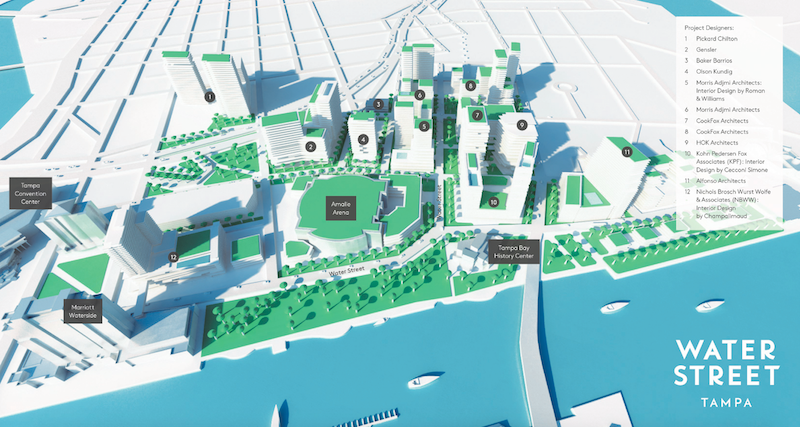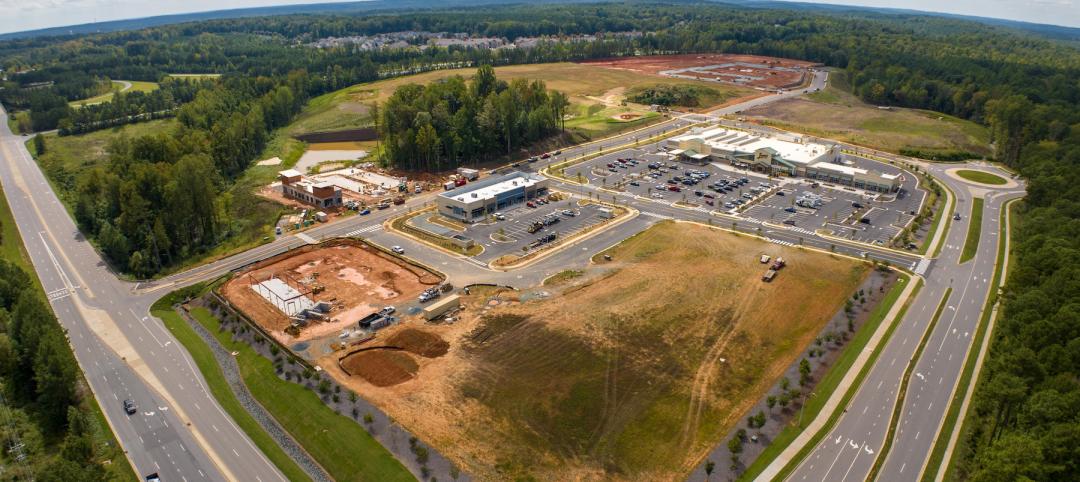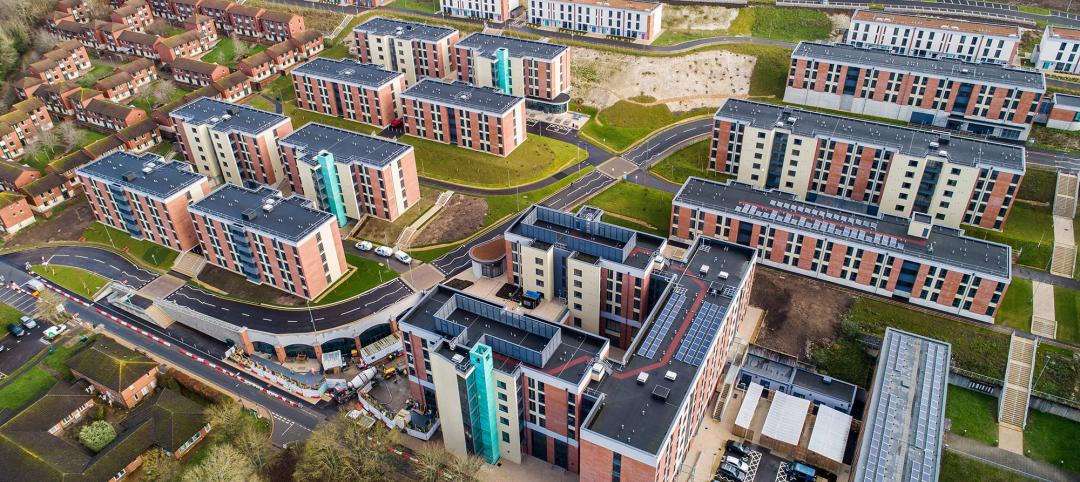Earlier this summer, the installation of more than $200 million in infrastructure, including new roadways and utilities, began in support of Water Street Tampa, a mixed-use neighborhood on 50 waterfront acres in this South Florida metro that, when completed in 2027, will include more than 9 million sf of residential, commercial, entertainment, cultural, and retail space.
Being built on what once were surface parking lots and industrial buildings, the $3 billion Water Street Tampa project is the vision of Strategic Property Partners (SPP), a development joint venture between Cascade Investment, which is controlled by Microsoft’s cofounder Bill Gates; and Jeff Vinik, who owns the Tampa Bay Lightning NHL franchise and the Tampa Bay Storm arena football team, and is a minority owner of the Boston Red Sox.
Gates and Vinik are the latest billionaire-entrepreneurs—others include Under Armour’s Kevin Plank in Baltimore and Quicken Loans’ Dan Gilbert in Detroit and Cleveland—to invest heavily in urban redevelopment and construction to reinvigorate economically challenged downtown areas.
“This is a city early in its growth,” Vinik said about Tampa during an interview last fall with Forbes magazine. “It’s a process, and we’re in the beginning to middle stages of that process. As someone who’s an investor, I look for potential and this has every bit of the raw materials to be a great place.”
Vinik added that Tampa benefits from its proximity to Latin America and from tourism in general.
If nothing else, Water Street Tampa is ambitious: it will include 18 buildings with 3,500 residences (which would double the current number downtown), 650-plus guest rooms in two hotels, 2 million sf of office space (the first to be built in downtown Tampa in 25 years), and 1 million sf of retail, cultural, educational, and entertainment space.
The project, which is expected to bring 23,000 workers and residents to this community, will offer 12.9 acres of green space. Water Street Tampa will be the first community certified under the WELL Community Standard being developed by the International Well Building Institute.
The first vertical phase of this project—with over 4 million sf of office, residential, hospitality, retail, and cultural, over 10 city blocks—will begin later this year and is scheduled for completion by 2020.
To view a video of how this project will develop and build out, click here.
SPP also donated an acre of land to the University of South Florida, which plans to relocate its Morsani College of Medicine and Heart Institute to an HOK-designed 300,000-sf facility in downtown Tampa. That construction is underway, and the new college should be ready for the fall semester in 2019.
 The Coral Gables, Fla.-based architectural firm Nichols Brosch Wurst Wolfe & Associates is the designer of a 500-key hotel that will be part of Water Street Tampa. Image: Strategic Property Partners.
The Coral Gables, Fla.-based architectural firm Nichols Brosch Wurst Wolfe & Associates is the designer of a 500-key hotel that will be part of Water Street Tampa. Image: Strategic Property Partners.
Water Street Tampa stands out for the sheer number of AEC firms that is involved in different aspects of this project.
They include nine national and local architectural firms: CookFox Architects (an office and residential over retail), Morris Adjmi Architects (a 157-key five-star hotel, condos, apartments, and retail), Olson Kundig (office over retail), Kohn Pedersen Fox Associates (condos and apartments over a grocery story and retail), Gensler (two offices over retail), Alfonso Architects (the redevelopment of the site near Garrison Channel and Hillsborough Bay, residential and waterfront retail, and a new public park on the Riverwalk), Nichols Brosch Wurst Wolfe & Associates (a 500-key four-star hotel), Pickard Chilton (three office and residential buildings over retail), and Baker Barrios (one building, and the community’s district-wide cooling system and infrastructure).
The developer is working with three interior design firms: Roman & Williams, Cecconi Simone, and Champallmaud. And in the predevelopment phase, it signed on with a host of general contractors: Kimmins, Creative, Skanska, Kast, Suffolk, Coastal, Holder, Gilbane, and Moss.
“We wanted to use a large, diverse group [of AEC firms] that would design and build unique buildings,” explains Bryan Moll, SPP’s Executive Vice President of Development, in an interview with BD+C. He points out that there will be collaboration among the AEC firms. And he expects several of the GCs to be involved in the project’s different construction phases.
Moll notes that the infrastructure under construction is replacing “a bunch of thoroughfares connecting a highway” with a more-walkable grid of streets that links the downtown more seamlessly with the rest of the city.
Tampa’s Amalie Arena, where the Lightning play, is located within the Water Street Tampa district, which is also near the Florida Aquarium and the city’s convention center. Moll says there’s a possibility that this project could include an entertainment district.
As a waterfront property, resilience is key, especially in light of recent storms that wracked Texas and Louisiana. The design and construction of Water Street Tampa address the likelihood of rising sea levels and future severe weather events.
Moll says the entire site is being built at least 11 feet above current sea level, and most of the buildings will be on an even higher plain, between 15 and 25 feet above sea level. Critical infrastructure and mechanicals will be located at higher elevations, too, he adds.
The city of Tampa and Hillsborough County are financing part of the infrastructure installation.
Related Stories
Mixed-Use | Oct 5, 2023
Mixed-use pieces supporting a master plan in North Carolina fall into place
Near Chatham Park, a new multifamily housing community follows the opening of a shopping center.
Contractors | Sep 25, 2023
Balfour Beatty expands its operations in Tampa Bay, Fla.
Balfour Beatty is expanding its leading construction operations into the Tampa Bay area offering specialized and expert services to deliver premier projects along Florida’s Gulf Coast.
Mixed-Use | Sep 20, 2023
Tampa Bay Rays, Hines finalize deal for a stadium-anchored multiuse district in St. Petersburg, Fla.
The Tampa Bay Rays Major League Baseball team announced that it has reached an agreement with St. Petersburg and Pinellas County on a $6.5 billion, 86-acre mixed-use development that will include a new 30,000-seat ballpark and an array of office, housing, hotel, retail, and restaurant space totaling 8 million sf.
Adaptive Reuse | Sep 19, 2023
Transforming shopping malls into 21st century neighborhoods
As we reimagine the antiquated shopping mall, Marc Asnis, AICP, Associate, Perkins&Will, details four first steps to consider.
Resort Design | Sep 18, 2023
Luxury resort provides new housing community for its employees
The Wisteria community will feature a slew of exclusive amenities, including a market, pub, and fitness center, in addition to 33 new patio homes.
Adaptive Reuse | Aug 31, 2023
Small town takes over big box
GBBN associate Claire Shafer, AIA, breaks down the firm's recreational adaptive reuse project for a small Indiana town.
Giants 400 | Aug 22, 2023
Top 115 Architecture Engineering Firms for 2023
Stantec, HDR, Page, HOK, and Arcadis North America top the rankings of the nation's largest architecture engineering (AE) firms for nonresidential building and multifamily housing work, as reported in Building Design+Construction's 2023 Giants 400 Report.
Giants 400 | Aug 22, 2023
2023 Giants 400 Report: Ranking the nation's largest architecture, engineering, and construction firms
A record 552 AEC firms submitted data for BD+C's 2023 Giants 400 Report. The final report includes 137 rankings across 25 building sectors and specialty categories.
Giants 400 | Aug 22, 2023
Top 175 Architecture Firms for 2023
Gensler, HKS, Perkins&Will, Corgan, and Perkins Eastman top the rankings of the nation's largest architecture firms for nonresidential building and multifamily housing work, as reported in Building Design+Construction's 2023 Giants 400 Report.
Adaptive Reuse | Aug 17, 2023
How to design for adaptive reuse: Don’t reinvent the wheel
Gresham Smith demonstrates the opportunities of adaptive reuse, specifically reusing empty big-box retail and malls, many of which sit unused or underutilized across the country.

















